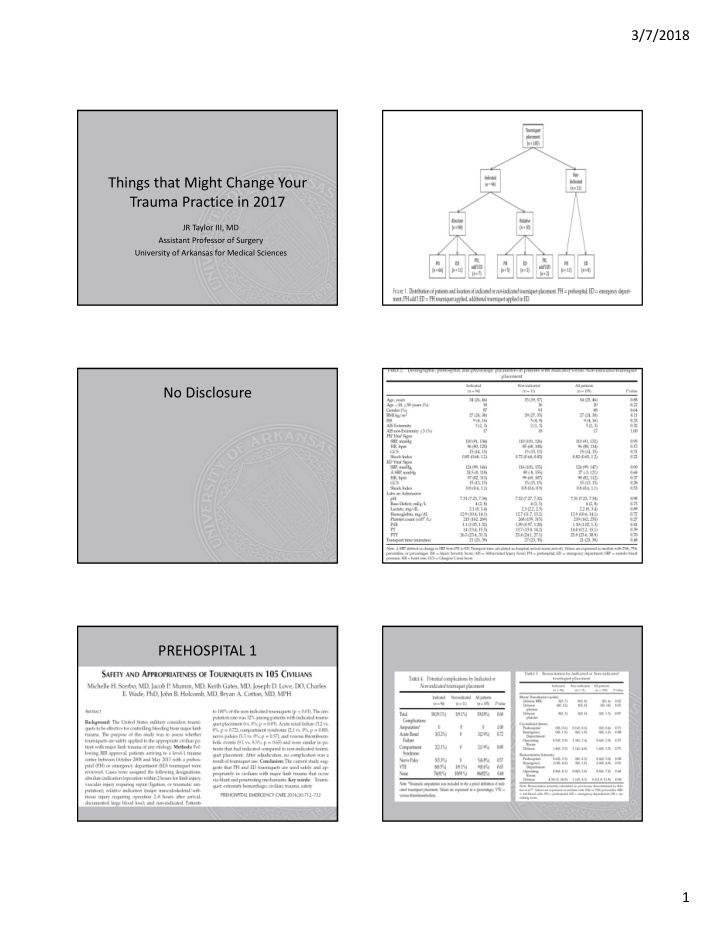



3/7/2018 Things that Might Change Your Trauma Practice in 2017 JR Taylor III, MD Assistant Professor of Surgery University of Arkansas for Medical Sciences No Disclosure PREHOSPITAL 1 1
3/7/2018 CONCLUSION • In civilians sustaining major limb trauma, prehospital and in ‐ hospital personnel are capable of applying tourniquets appropriately • No complications due to tourniquet use Safe to use in civilians with major upper or lower limb trauma via blunt or penetrating mechanisms PREHOSPITAL 2 CONCLUSION • For individuals with penetrating injuries in urban trauma systems, private vehicle transport to a Level 1 or Level 2 trauma center is associated with significantly lower mortality when compared with similarly injured individuals who are transported by ground EMS PREHOSPITAL 3 2
3/7/2018 CONCLUSION • Blood product transfusion within minutes of injury or prehospital was associated with greater 24 ‐ hour and 30 ‐ day survival than with delayed transfusion or no transfusion RESUSCITATION 1 3
3/7/2018 RESUSCITATION 2 4
3/7/2018 RESUSCITATION 3 INR > 1.5 2 U FFP • Fibrinogen < 150 mg/dl 10 ‐ pack CRYO • PLT < 100,000 1 U apheresis of PLT • D ‐ diner > 0.5 mcg/ml TXA given • CONCLUSION • 30 day survival for patients who received REBOA for severe traumatic hemorrhage 59% • 24 hour survival for patients in traumatic arrest who received REBOA 10% Admission TEG ACT > 140s 2 FFP, 10 ‐ pack CRYO, 1 U apheresis of PLT • 111 < ACT < 139 2 FFP • REBOA is a safe alternative to ED thoracotomy • in patients who present in traumatic arrest Subsequent TEG ACT > 110 2 FFP, angle < 63 10 ‐ pack CRYO, • MA < 55 1 U apheresis PLT, LY30 > 3.0% 1g TXA • 5
3/7/2018 CONCLUSION • Goal ‐ directed, TEG ‐ guided MTP improves survival after injury and promotes appropriate use of hemostatic blood products INTERVENTION 1 6
3/7/2018 CONCLUSION • At 6 months, decompressive craniectomy for severe and refractory intracranial hypertension after TBI resulted in mortality that was 22% lower than that with medical management • Surgery also associated with higher rates of vegetative states, lower severe disability, and upper severe disability than medical management • Rates of moderate disability and good recovery with surgery were similar to medical management INTERVENTION 2 7
3/7/2018 FIBRINOLYSIS PHENOTYPES CONCLUSION • Persistent fibrinolysis shutdown is associated with increased late mortality after trauma • Not much is known about the impact of TXA on patients with persistent shutdown 8
Recommend
More recommend